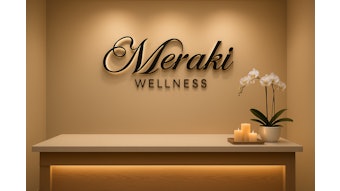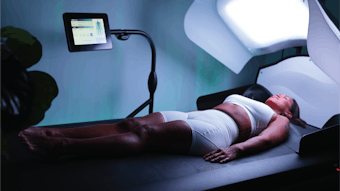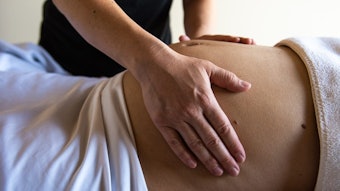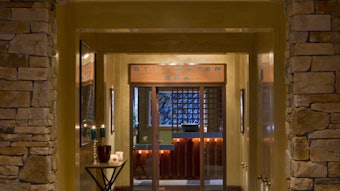
In our debut edition of our Green Space column, we’re sitting down with Daniel Johnson, executive director and CEO of The Green Beauty Community to talk about…well, community—especially in these uncertain times. Community’s the kernel from which The Green Beauty Community’s rapidly growing non-profit sprang, it’s a whole that has evolved into a fractal of intimate social pockets and the key to navigating the tumultuous economic landscape and harmful social policies that will affect us and our neighbors.
Log in to view the full article
In our debut edition of our Green Space column, we’re sitting down with Daniel Johnson, executive director and CEO of The Green Beauty Community to talk about…well, community—especially in these uncertain times. Community’s the kernel from which The Green Beauty Community’s rapidly growing non-profit sprang, it’s a whole that has evolved into a fractal of intimate social pockets and the key to navigating the tumultuous economic landscape and harmful social policies that will affect us and our neighbors.
When we sit down for our meeting, the conversation immediately assumes the gravity with which hard times call for. Johnson starts by apologizing, “I don’t mean to start all doom and gloom.” He already has my undivided attention though. Being a beauty professional and sustainability advocate on top of his leadership role with The Green Beauty Community means he’s more qualified than most to speak to the state of sustainability, especially in the beauty industry. According to Johnson, the usual challenges climate activists face are compounded by more recent global challenges spurred by American lawmakers, particularly those relating to DEI cuts and tariffs. This, he says, is where community is crucial. “The challenges climate activists are facing today…are scary. All of us as marginalized groups or people who care for certain causes feel like we’re under attack from almost every direction, and sometimes it’s overwhelming. It’s understandable to feel kind of alienated. It feels like everything I’ve cared about for the past 20 years is being erased. Whether it’s black history, or [progress] in the industry, the strides we’ve made to promote equity and inclusion, environmentalism, of course, and rolling back grants for non-profits, which specifically affects us.” In the first couple of minutes of our conversation, Johnson manages to draw a perfect throughline within the complicated subject of sustainability—while environmentalism is a major piece of sustainability, social awareness and inclusion are equally important parts, after all, it’s the smaller ecosystems that comprise a larger complex environment and the behaviors of these smaller pieces can impact the larger system in significant ways. To take care of the spaces we all move through is to support each other, and of course, things that impact the environment directly affect our lives too.
Johnson goes on to discuss the attacks befalling the Environmental Protection Agency (EPA), a recent example involving the current administration’s attack on Endangerment Finding. In dismantling major pieces of the climate change response framework, officials leave the rest of us rattling inside among the broken pieces. It’s clear that because sustainability and community are intricately intertwined, you can’t talk about one without also talking about the vulnerable populations affected without seeing the implications of who's hit first and worst. Destroying environmental sustainability framework means also being capable of the same reckless endangerment of other types of sustainability initiatives, particularly those that pertain to social sustainability. “Then there’s the constant attack the LGBTQ+ members are facing,” Johnson says firmly. “That’s where I feel, personally, community plays the biggest role. We can’t be everywhere at all times.”
What Is A Community?
Movements like climate activism are made up of members of the community and communities are made up of people of all creeds, ethnicities, genders, sexualities and more. That’s where the importance of outreach and sticking together comes in. “We can pick our cause to champion and rally,” says Johnson. “We can network and support each other’s causes, and be that home base that the people in our industry need. If you think about it, our industry represents everyone under attack right now. All of the marginalized communities? That’s us. We are professionals who are queer, who are Black and Brown, who are concerned about women’s rights, who are immigrants, who are environmentalists. We are looking for diversity. We want to be included.”
Johnson describes community as a system of giving and receiving, transporting me back to a time that lives in many of our distant memories; one of knowing our neighbors. With everything online these days, one person has a reach that would have been unfathomable even fifty years ago, but did we jump on this new functionality and leave our local relationships to decay? The Green Beauty Community is built on concrete deliverables, like their recent Green Pledge movement, an accessible initiative they ran through Earth Month (though, it’s never the wrong month to practice more environmentally friendly practices.) More than that, The Green Beauty Community is dedicated to providing other resources that drive action; community directories for getting in touch with other like-minded beauty professionals, and educational materials like their guidebook. Johnson and his team work tirelessly to make environmental activism welcoming to beauty professionals regardless of where they are on their activism journey.
First steps, baby steps—they’re all still steps forward. “Identify your passion,” Johnson encourages. “The hardest part is getting out there. Once you locate the people you feel you align yourself with, get up and go. You see someone? Speak to them. Start the initial conversation. Start ingraining yourself in a space you want to be in. Give yourself goals and give yourself time. Everything doesn’t need to happen overnight. Specifically, when we talk about sustainability, I think people avoid it because they’re afraid of commitment, because they’re afraid it’s going to cost them money, they don’t see an ROI or now they have to redo everything, and it’s not that. The first step is really to be mindful about it. Once that’s on your mind, you set the intention, and once you set the intention–that’s the formula for action.” He says remembering to unplug hot tools or turn off the water when not in use, is a great starting point from which larger climate activism can evolve.
Meaningful Change and Accountability
When it comes to activism and non-profits, there sits the fallacy of “perfect philanthropy.” While accountability is important in making meaningful change, purity culture has no place in making practical social change. The idea that if there is no perfect solution to these deeply-ingrained, long-stretching, systemic issues, that we should do nothing until we find one that is, is harmful because it promotes stagnation, which can breed fear and hopelessness and halt a movement in its tracks. Johnson’s been in his current leadership position for about a year. A couple of years ago, he decided sustainability advocates in the beauty industry needed a space to come together that was brand-agnostic. It all started with an Instagram account, and after connecting with a few other like-minded individuals, The Green Beauty Community was born. Last year, they attended America’s Beauty Show (ABS), which was a pivotal point for them and what started them on the path of becoming a non-profit.
I asked Johnson to predict the future of a successful climate movement for us. “The future is demanding that it has to be community-centered, and less about talking to the ether,” he says. “That’s the thought process behind being accountable. It’s all about proving the why—why do we exist? Can we galvanize the industry?” As it turns out, The Green Beauty Community can. Even though it’s just two years old, the foundation’s found a healthy influx of members and online awareness, with members growing 48% in its recent history. “You have to have that community, you need to have that genuine connection—it can exist on the internet, but it can’t be what it was.”
This holds now more than ever—with how rapidly the world is changing and how aware of everything everyone can be at any given time, the burden of knowledge is too much to bear alone, and it’s up to the global community, not just activists, to share that weight and hold policymakers accountable for the needs of the communities they govern. “Individuals can and should stand up,” Johnson encourages. “But groups are so important.”
People can start showing up for their communities by making friends and including others. “Come in, shake hands and see where it goes from there,” says Johnson. Being a member, specifically of The Green Beauty Community means helping create an open space for people that is what it needs to be at any given moment. Our conversation starts to reach its conclusion; “I don’t feel like I’m doing this alone,” says Johnson earnestly.










